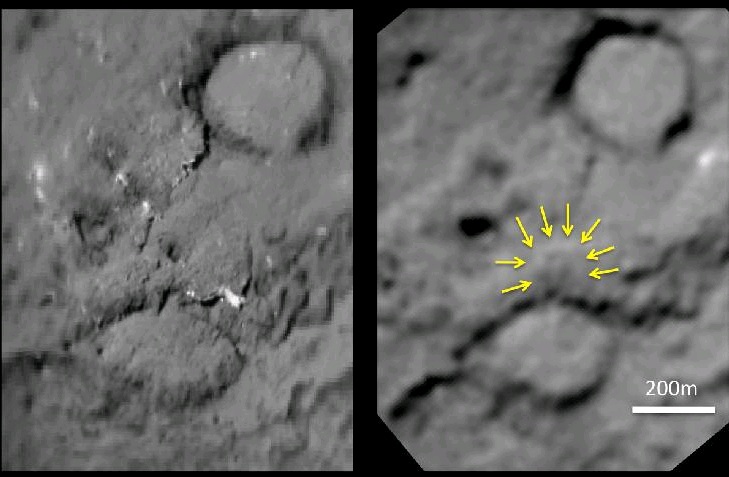NASA's Stardust spacecraft transmitted close-up images of the comet Temple-1 with the scar left by the Deep Impact mission from 2005. The image also shows that the comet's nucleus is fragile and weak

There is also scientific significance in returning to the scene of an event on another celestial body after six years. NASA's Stardust spacecraft transmitted close-up images of comet Temple-1 with the scar left by the Deep Impact mission from 2005. The image also shows that the comet's nucleus is fragile and weak.
The Deep Impact spacecraft reached the closest point to Comet Temple 1 on Monday, February 14 at 16:40 Israel time, at a distance of about 178 kilometers from our orbit.
Stardust took 72 high-resolution images of the comet. It also collected data about the dust cloud that makes up the comet's atmosphere. The spacecraft is on its second mission after successfully collecting particles from another comet and returning them to Earth.
The Stardust Next mission accomplished its goals, which included observing altered surface contours in areas previously seen in 2005 by the Deep Impact mission, photographing new surfaces, and observing the crater created when the 2005 mission fired a projectile into it.
"The mission was 1 percent successful," says Joe Worka, the principal investigator of the Stardust Next mission from Cornell University. "We saw a lot of new things that we didn't expect and we will work hard to understand what Temple XNUMX is trying to explain to us."
Some of the images provide fascinating clues about the results of the Deep Impact mission's collision with Temple 1. "We saw a crater with a small mound in the center and it appears that some of the thrown material flew up and fell right back," says Peter Schultz of Brown University. "This means that the nucleus of this comet is fragile based on the delicate nature of the crater we saw today."

4 תגובות
Why "talking nonsense"?
I checked the attached image in its enlarged format:
https://www.hayadan.org.il/images/content3/2011/02/tample1_stardust_next.jpg
And it really seems that the new picture is very blurry while the old one is sharp and clear, why is it like that? I don't know, maybe the photographer was excited, maybe his hand was shaking. Anyway, it's a fact, the new picture is much more blurred.
It's fun for an "interested person" to talk nonsense, right?
Can't you post a smaller picture? You can even see some pixels of the impact crater!
If you look at the images that NASA released, you can see that the images taken now are of a much lower quality than the ones taken by Deep Impact in 2005. That's how it is when you save up and send old Aunt Voyager's old camera instead of buying something new.
http://www.nasa.gov/mission_pages/stardust/multimedia/gallery-index.html